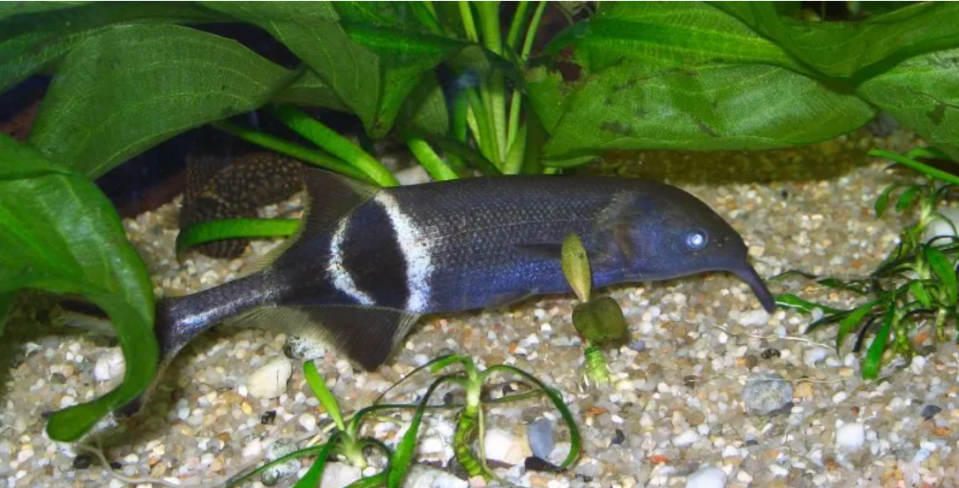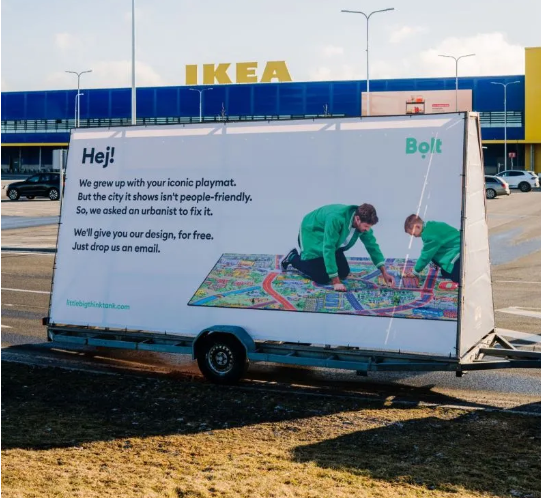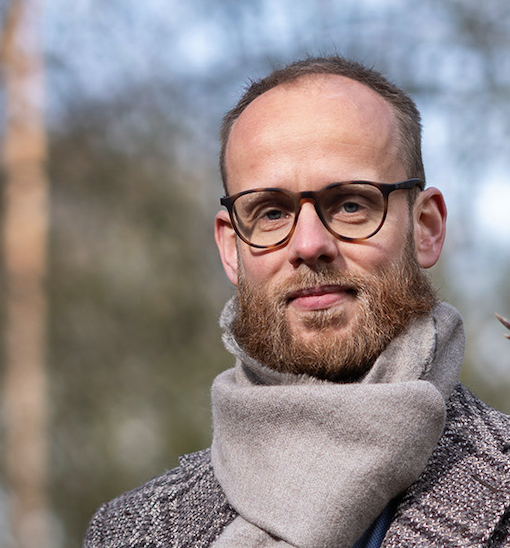The theme for this newsletter appears to be ‘network’. It features networked fish, a networked city and swarm intelligence.
Interestingly, this theme emerged spontaneously, which reminds me of the concept of spontaneous generation. This outdated belief said that life could arise spontaneously from non-living matter. Essentially, it suggested that any life form could be created on-demand from non-living materials by following certain “recipes”, such as:
“If a soiled shirt is placed in the opening of a vessel containing grains of wheat, the reaction of the leaven in the shirt with fumes from the wheat will, after approximately twenty-one days, transform the wheat into mice.”
I’m sure that if you were to try this, there would be a good chance you would find mice after 21 days… But yeah… Something about correlation and causality…
These recipes would be a very welcome method for applying regenerative intelligence, but reality is a bit more complex. In fact, I still don’t fully know what I’m searching for, it’s evolving along the way. And composing this newsletter and discovering these fascinating insights energizes me. There are so many connections, and so much to gain; to create a better future for ourselves, our children and the planet. So let’s dive in! I’m excited to share with you three new gems, three new steps forward in finding Regenerative Intelligence:
- Natural Intelligence: Meet the Elephant Fish – Collective Sensing and Electric Movements
- Human Intelligence: IKEA’s iconic playmat; cars – vs – bicycles
- Artificial Intelligence: Swarm Intelligence – Multiple AI agents
1) Meet the Elephant Fish – Collective Sensing and Electric Movements
Natural Intelligence
Trying to understand AI better by looking at other forms of intelligence and ways of being. May I introduce to you; the Elephant Fish. It dances to see it’s environment and even can ‘see’ what other fish perceive… As my friend Marijn framed it; these are networked fish!

Seeing by dancing
The elephant fish has receptors in its skin that allow it to communicate via electricity. The fish also use movements such as twisting, pacing, and shimmying to “see” objects by interpreting the changes to the electric field around them. It’s basically doing an Electric Boogie :P. This way they can explore their often dark and cloudy environment.
Collective Sensing
Researchers suspected that elephant fish have developed properties during their evolution that allow them to collectively (!) detect objects or other organisms from greater distances better than an individual animal could. Research showed that the fishes’ electrosensory systems respond to their own signals as well as to those of other fish. They also responded to simulated signals in the lab.
Together they were up to three times (!) better to detect obstacles. This is akin to being able to look with each other’s eyes… It’s like swarm intelligence, or Collective Sensing as the researchers named. Nature is incredible..!
Source Electric Boogie: https://lnkd.in/euZbzQF9
Source Collective Sensing: https://lnkd.in/eA9N-3cE
2) IKEA’s iconic playmat; cars – vs – bicycles
Human Intelligence

From Networked Fish we go to a Networked City.
My 18 months old son is obsessed with cars. It is one of the many mysteries he brought into my life. He’s been pointing at and naming every car he sees and scans every environment for toy cars. His fascination is puzzling, especially since my wife and I are quite indifferent towards cars. To me, the attraction seems really ‘primal’; cars are big, interactive, loud, impressive, and easily recognizable in real life.
The project you see on the photo intrigues me. I appreciate their goal of redefining what ‘mobility’ means. The philosophy behind the project is as follows:
“Today’s adults grew up playing with toys on playmats inspired by city maps. The ones with plenty of roads and parking spots — but fewer parks, pavements, or bike paths.
The Little Big Think Tank set out to fix this.
Instead of highways and parking lots, The Little Big Playmat features shared mobility hubs, protected cycle lanes, pedestrian infrastructure, and a whole lot of greenery.”
Reflecting on my son’s car fascination, I believe that in addition to changing the playmat, we should also enhance the appeal of other vehicles. Imagine making bicycles, rollerblades, silent cars, and trains more attractive and cool for kids, not just as toys but also as real-world transportation options they see daily.
This playmat scenario demonstrates how influences can be cyclical; what we grow up with becomes our norm and seems to be the logical thing to do. The primal fascination for cars throws in a difficulty, and shows that reality is immensely complex, and there are no simple solutions. However, I find every effort to transform a cycle into an upward spiral admirable, and a showcase of regenerative intelligence.
3) Swarm Intelligence – Multiple AI agents
Artificial Intelligence
This quest of Regenerative Intelligence has led me down various rabbit holes, one of which is Swarm Intelligence. You might be familiar with the term, first introduced in 1989 and it experienced some buzz in 2019;
Swarm intelligence is the discipline that deals with the study of self-organizing processes both in nature and in artificial systems. Researchers in ethology and animal behavior have proposed a number of models to explain interesting aspects of collective behaviors such as movement coordination, shape-formation or decision making. Recently, algorithms and methods inspired by these models have been proposed to solve difficult problems in many domains.
Swarm intelligence is the study of decentralized, self-organized systems that can move quickly in a coordinated manner.
While it isn’t getting much attention now, there’s still progress being made and I found that the concept aligns well with the networked fish and city above. Some interesting gems I found while exploring the latest of swarm intelligence:
Army drones; In July 2022 NATO published a paper addressing the definition of ‘swarm’. since in some cultures swarm refers to drones in the air, but in other cultures it’s also being used to name all the uncrewed drones, whether they are in the air, land, or sea. The article mentions that in the future ‘Collective Intelligence’ may be an attribute of an overarching definition.
Collective Intelligence (CI): CI refers to a group or a team’s combined capacity and capability to perform a wide variety of tasks and solve diverse problems. Collective Intelligence has been found to consistently predictive of the future performance of groups and teams. Teams with high levels of CI achieve a state of interdependence and flow when they are working together. CI has also been attributed to bacteria and animals. This raises the question: Will AI agents working with humans be seen as part of future CI? Or will the humans always be the main characters? Or will the acknowledgment of AI’s as full participants differ from case to case / company to company / culture to culture?

More AI Agents Is All You Need?: What are the cool kids talking about these days? Multiple AI agents working together! One example is crewAI. They offer a developer framework, tools and UI to build your own multi-agent automations locally. Research about the actual practical benefits of agents working together is being done, like this paper More Agents Is All You Need, or this interesting discussion about the paper at Hacker News. It’s still in it’s infancy, but let’s imagine a dishwasher AI + Electric Vehicle AI + Calendar AI + Meeting summarizer AI + Creator AI working together. Can they show a collective organisation? Can their sum be bigger than their parts? In the realm of Regenerative Intelligence, the emphasis is on the blend and interconnectedness of these networks, striving for symbiotic rather than parasitic relationships. The quest continues to identify networks comprising elements from nature, humanity, and AI—a potentially fascinating discovery for our next exploration!
In conclusion
AI agents working together can be seen as a swarm intelligence, or networked AI’s. Regarding Regenerative Intelligence, it’s all about the mix and interconnectedness of these networks. How they can avoid a parasitic relationship and find a symbiotic one. That’s something to look out for; examples of networks where in which some ‘nodes’ are from nature, some from humans, some from AI… Maybe we will find this in the next quest!

 English | EN
English | EN 